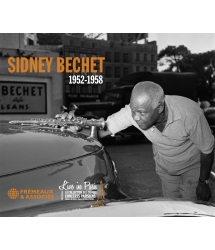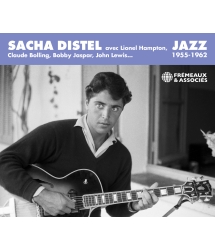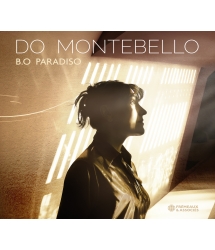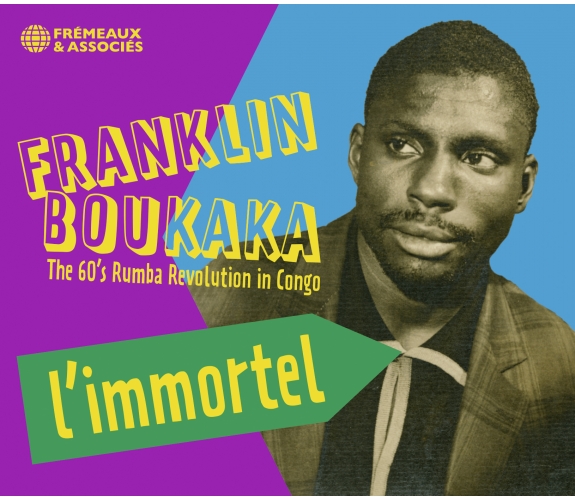- Notre Catalogue
- Philosophie
- Philosophes du XXème siècle et d'aujourd'hui
- Histoire de la philosophie (PUF)
- Contre-Histoire et Brève encyclopédie par Michel Onfray
- L'œuvre philosophique expliquée par Luc Ferry
- La pensée antique
- Les penseurs d'hier vus par les philosophes d'aujourd'hui
- Textes philosophiques historiques interprétés par de grands comédiens
- Histoire
- Livres
- Sciences Humaines
- Paroles historiques
- Livres audio & Littérature
- Notre Catalogue
- Jazz
- Blues - R'n'B - Soul - Gospel
- Rock - Country - Cajun
- Chanson française
- Musiques du monde
- Afrique
- France
- Québec / Canada
- Hawaï
- Antilles
- Caraïbes
- Cuba & Afro-cubain
- Mexique
- Amérique du Sud
- Tango
- Brésil
- Tzigane / Gypsy
- Fado / Portugal
- Flamenco / Espagne
- Yiddish / Israël
- Chine
- Tibet / Népal
- Asie
- Océan indien / Madagascar
- Japon
- Indonésie
- Océanie
- Inde
- Bangladesh
- URSS / Chants communistes
- Musiques du monde / Divers
- Musique classique
- Compositeurs - Musiques de film - B.O.
- Sons de la nature
- Notre Catalogue
- Jeunesse
- Philosophie
- Nouveautés
- Comment commander ?
- Recevoir le catalogue
- Manifeste
- Dictionnaire











- Notre Catalogue
- Philosophie
- Philosophes du XXème siècle et d'aujourd'hui
- Histoire de la philosophie (PUF)
- Contre-Histoire et Brève encyclopédie par Michel Onfray
- L'œuvre philosophique expliquée par Luc Ferry
- La pensée antique
- Les penseurs d'hier vus par les philosophes d'aujourd'hui
- Textes philosophiques historiques interprétés par de grands comédiens
- Histoire
- Livres
- Sciences Humaines
- Paroles historiques
- Livres audio & Littérature
- Notre Catalogue
- Jazz
- Blues - R'n'B - Soul - Gospel
- Rock - Country - Cajun
- Chanson française
- Musiques du monde
- Afrique
- France
- Québec / Canada
- Hawaï
- Antilles
- Caraïbes
- Cuba & Afro-cubain
- Mexique
- Amérique du Sud
- Tango
- Brésil
- Tzigane / Gypsy
- Fado / Portugal
- Flamenco / Espagne
- Yiddish / Israël
- Chine
- Tibet / Népal
- Asie
- Océan indien / Madagascar
- Japon
- Indonésie
- Océanie
- Inde
- Bangladesh
- URSS / Chants communistes
- Musiques du monde / Divers
- Musique classique
- Compositeurs - Musiques de film - B.O.
- Sons de la nature
- Notre Catalogue
- Jeunesse
- Philosophie
- Nouveautés
- Comment commander ?
- Recevoir le catalogue
- Manifeste
- Dictionnaire
13/05/61
Art Blakey
Ref.: FA5862
Direction Artistique : Michel Brillié et Gilles Pétard
Label : FREMEAUX & ASSOCIES
Durée totale de l'œuvre : 3 heures 40 minutes
Nbre. CD : 3
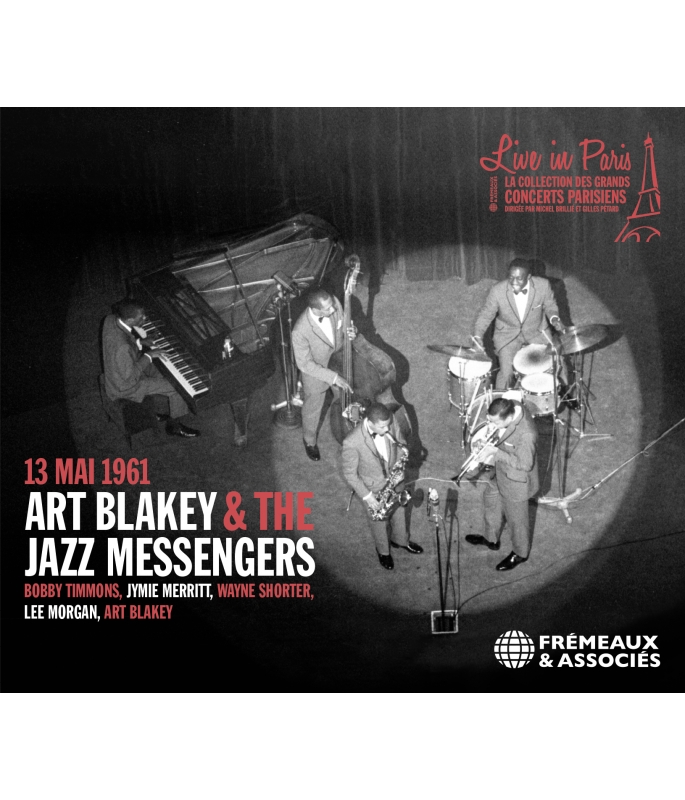
13/05/61
- - Choc Jazz Magazine
- - Choc Classica
- - Sélection Noël Télérama
- - Top Mezzo
- - Recommandé par le New York City Jazz Record
Dirigés par Art Blakey, parmi les batteurs les plus influents au monde, les Jazz Messengers restent à jamais comme l’une des plus mythiques formations de l’histoire du jazz. Celle-ci a révélé parmi les plus grands instrumentistes des années 1950 à 1980. Capté le 13 mai 1961 à Paris, cet enregistrement retranscrit l’âge d’or de la formation qui inclut notamment aux cuivres les légendaires Lee Morgan et Wayne Shorter et les titres phares comme « Moanin’ » ou « Blues March ». Un coffret live qui conjugue beats fiévreux et groove juvénile tonitruant, sans doute la plus parfaite retranscription de ce qu’a été la révolution hard bop au début des années 1960.
Patrick FRÉMEAUX
La collection Live in Paris, dirigée par Michel Brillié, permet de retrouver des enregistrements inédits (concerts, sessions privées ou radiophoniques), des grandes vedettes du jazz, du rock & roll et de la chanson du XXe siècle. Ces prises de son live, et la relation avec le public, apportent un supplément d’âme et une sensibilité en contrepoint de la rigueur appliquée lors des enregistrements studios. Une importance singulière a été apportée à la restauration sonore des bandes, pour convenir aux standards CD tout en conservant la couleur d’époque.
Patrick FRÉMEAUX & Gilles PÉTARD
CD1
1 The Summit 10’21
2 Band Intro 01’44
3 Yama 12’04
4 Close Your Eyes 12’22
5 Dat Dere 09’56
6 Lost & Found 16’34
7 Round Midnight [First Concert] 12’15
CD2
1 Kozo’s Waltz 17’53
2 Those Who Sit and Wait 10’34
3 Night in Tunisia [First Concert] 11’40
4 The Theme 01’58
5 Round Midnight [Second Concert] 10’59
6 So Tired 12’37
7 My Funny Valentine 06’59
CD3
1 It’s Only a Papermoon 14’36
2 Noise in the Attic 12’26
3 Moanin’ 10’42
4 I Didn’t Know what Time it Was 05’47
5 Blues March 12’34
6 Night in Tunisia [Second Concert] 16’32
BOBBY TIMMONS (PIANO) • JYMIE MERRITT (DB) • WAYNE SHORTER (SAX TEN) • LEE MORGAN (TP) • ART BLAKEY (DMS)
DIRECTION ARTISTIQUE : GILLES PÉTARD ET MICHEL BRILLIÉ • LIVRET : MICHEL BRILLIÉ
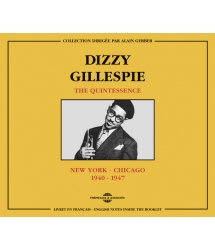
NEW YORK - CHICAGO 1940 - 1947
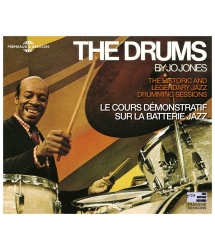
LE COURS DÉMONSTRATIF SUR LA BATTERIE JAZZ
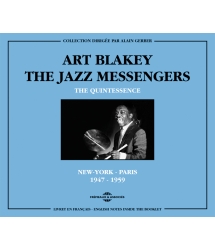
NEW-YORK - PARIS 1947-1959
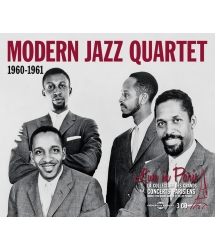
LIVE IN PARIS 1960-1961




-
PisteTitreArtiste principalAuteurDuréeEnregistré en
-
1The SummitArt Blakey & The Jazz MessengersWayne Shorter00:10:211961
-
2Band IntroArt Blakey & The Jazz MessengersArt Blakey00:01:441961
-
3YamaArt Blakey & The Jazz MessengersLee Morgan00:12:041961
-
4Close your EyesArt Blakey & The Jazz MessengersBernice Petkere00:12:221961
-
5Dat DereArt Blakey & The Jazz MessengersJon Hendricks00:09:561961
-
6Lost and FoundArt Blakey & The Jazz MessengersJordan Clifford00:16:341961
-
7Round Midnight First ConcertArt Blakey & The Jazz MessengersBerbie Hanighen00:12:151961
-
PisteTitreArtiste principalAuteurDuréeEnregistré en
-
1Kozo’s WaltzArt Blakey & The Jazz MessengersLee Morgan00:17:531961
-
2Those Who Sit and WaitArt Blakey & The Jazz MessengersWayne Shorter00:10:341961
-
3Night in Tunisia First ConcertArt Blakey & The Jazz MessengersJon Hendricks00:11:401961
-
4The ThemeArt Blakey & The Jazz MessengersArt Blakey00:01:581961
-
5Round Midnight Second ConcertArt Blakey & The Jazz MessengersBerbie Hanighen00:10:591961
-
6So TiredArt Blakey & The Jazz MessengersBobby Timmons00:12:371961
-
7My Funny ValentineArt Blakey & The Jazz MessengersLorenz Hart00:06:591961
-
PisteTitreArtiste principalAuteurDuréeEnregistré en
-
1It’s Only a PapermoonArt Blakey & The Jazz MessengersLorenz Hart00:14:361961
-
2Noise in the AtticArt Blakey & The Jazz MessengersWayne Shorter00:12:261961
-
3MoaninArt Blakey & The Jazz MessengersBobby Timmons00:10:421961
-
4I Didn’t Know What Time it WasArt Blakey & The Jazz MessengersLorenz Hart00:05:471961
-
5Blues MarchArt Blakey & The Jazz MessengersBenny Golson00:12:341961
-
6Night in Tunisia Second ConcertArt Blakey & The Jazz MessengersJon Hendricks00:16:321961
CLIQUER POUR TELECHARGER LE LIVRET
13 MAI 1961
ART BLAKEY & THE
JAZZ MESSENGERS
BOBBY TIMMONS, JYMIE MERRITT, WAYNE SHORTER,
LEE MORGAN, ART BLAKEY
Dirigés par Art Blakey, parmi les batteurs les plus influents au monde, les Jazz Messengers restent à jamais comme l’une des plus mythiques formations de l’histoire du jazz. Celle-ci a révélé parmi les plus grands instrumentistes des années 1950 à 1980.
Capté le 13 mai 1961 à Paris, cet enregistrement retranscrit l’âge d’or de la formation qui inclut notamment aux cuivres les légendaires Lee Morgan et Wayne Shorter et les titres phares comme « Moanin’ » ou « Blues March ». Un coffret live qui conjugue beats fiévreux et groove juvénile tonitruant, sans doute la plus parfaite retranscription de ce qu’a été la révolution hard bop au début des années 1960. Patrick FRÉMEAUX
Art Blakey was among the most influential jazz drummers in the world, and his Jazz Messengers were a legendary band: you only have to look at the amazing number of great soloists it revealed in three decades (fifties to eighties.) This set contains live recordings the Messengers made in Paris on 13 May 1961 – it was the band’s golden age, featuring such wonderful instrumentalists as Lee Morgan and Wayne Shorter in its ranks, notably playing titles like “Moanin’” and “Blues March”. The music here is played at fever pitch by young musicians who groove like thunder; as a kind of transcription of Blakey’s version of the hard bop revolution, it probably comes very close to perfection. Patrick FRÉMEAUX
La collection Live in Paris, dirigée par Michel Brillié, permet de retrouver des enregistrements inédits (concerts, sessions privées ou radiophoniques), des grandes vedettes du jazz, du rock & roll et de la chanson du XXe siècle. Ces prises de son live, et la relation avec le public, apportent un supplément d’âme et une sensibilité en contrepoint de la rigueur appliquée lors des enregistrements studios. Une importance singulière a été apportée à la restauration sonore des bandes, pour convenir aux standards CD tout en conservant la couleur d’époque. Patrick FRÉMEAUX & Gilles PÉTARD
The Live in Paris collection by Michel Brillié allows listeners to hear previously-unreleased recordings (made at concerts and private- or radio-sessions) by the great 20th stars in jazz, rock & roll and song. These “live” takes, and the artists’ rapport with their audiences, gives these performances an additional soul and sensibility in counterpoint to the rigorous demands of studio recordings. Particular care was taken when restoring the sound of these tapes in order to meet CD standards while preserving the original colours of the period. Patrick FRÉMEAUX & Gilles PÉTARD
ART BLAKEY & THE JAZZ MESSENGERS
CD1
1 The Summit 10’21
2 Band Intro 01’44
3 Yama 12’04
4 Close Your Eyes 12’22
5 Dat Dere 09’56
6 Lost & Found 16’34
7 Round Midnight [First Concert] 12’15
CD2
1 Kozo’s Waltz 17’53
2 Those Who Sit and Wait 10’34
3 Night in Tunisia [First Concert] 11’40
4 The Theme 01’58
5 Round Midnight [Second Concert] 10’59
6 So Tired 12’37
7
My Funny Valentine 06’59
CD3
1 It’s Only a Papermoon 14’36
2 Noise in the Attic 12’26
3 Moanin’ 10’42
4 I Didn’t Know what Time it Was 05’47
5 Blues March 12’34
6 Night in Tunisia [Second Concert] 16’32
Art Blakey & The Jazz Messengers – Live in Paris 13 mai 1961
Par Michel Brillié
Les drums ou la vie
«Ma vie a été bonne, meilleure que beaucoup d’autres, même si j’étais orphelin et autodidacte.
Je sais ce que c’est d’être pauvre, d’avoir à se battre.»1 Ça, ramer, il va connaître, le petit Arthur.
En pleine dépression des années trente, dans les aciéries et les mines de charbon de Pittsburg,
le garçonnet est déjà au boulot. C’est un exercice de survie quotidienne, et pour mettre un peu
de bacon dans son burger, Blakey apprend. Il apprend la Bible et le piano en même temps. Mais
c’est ses petits concerts d’adolescent au «Democratic Club» de la capitale de la Pennsylvanie qui
sont rentables – très rentables.
«J’inventais des chansons cochonnes en mi bémol. Des trucs bien grossiers, et les gens adoraient
ça et je recevais dix, vingt, quarante dollars de pourboire par soirée. J’ai ramené beaucoup d’argent
dans cette tirelire à pourboires, j’étais la plus grosse cash-machine de la boite.»2
Le «Depression Baby» de 15 ans cachetonne au clavier de plus en plus régulièrement. Il se
retrouve un soir entouré d’une petite formation plus étoffée, plus pro aussi : les gars savent lire
une partition. Blakey , lui, pas. Il essaye de mémoriser le morceau à l’oreille, mais sans succès. Il
y a un type assis dans un coin qui se lève et dit : «Laisse-moi essayer…»
Le gars se met au piano et exécute le truc à la vitesse grand V. C’était Erroll Garner…
La suite, comme le raconte Art Blakey, a marqué la fn de sa carrière de pianiste :
«Le propriétaire du club était là à une table, et il m’a appelé : ‘Dis-donc, Art, je pense que le gamin
devrait se mettre au piano et toi à la batterie.» J’ai dit, «Ecoute, mec, c’est mon groupe, c’est
pas à toi de me dire quoi faire.» Il me répond, «Tu veux continuer à bosser ou pas ?» Et il pose
un revolver Magnum 357 sur la table. Je dis « Et comment que je veux !» Alors il me dit, «Ben
espèce de connard, bouge toi et va jouer des drums !» Et ça ne s’est jamais arrêté. C’était une
question de survie.»3
Et Art apprend la dure école de la (sur) vie. Au tout début chez Chick Webb –beaucoup en tant que
valet, un peu comme drummer. Webb, en voyant les efforts de showman du jeune Art avec ses
baguettes, lui balance : «Hey fston, la musique est dans les drums, pas dans l’air…»4 Ensuite,
passages chez Mary Lou Williams, Fletcher Henderson, Billy Eckstine. Puis passage... à vide.
Blakey, désoeuvré, et un peu désabusé, accepte un contrat sur un bateau qui part en Afrique. Au
Nigéria, il va être confronté à d’autres philosophies, d’autres religions. L’Islam : Art Blakey change
1. Art Blakey, cité par Les Tomkins ,More Messages from the Messenger, , artblakey.com, 1987
2. Art Blakey, cité par Bill Crow, Jazz Anecdotes, Oxford University Press, 1990
3. id
4. Id
2
son nom pour devenir Abdullah Ibn Buhaina – Bu pour ses amis. Bu donc devait rester trois mois
sur place, il va y séjourner deux ans durant. Pour apprendre les gens, vivre avec et parmi eux – et
leur relation avec les percussions.
La pépinière de talents : les Messengers
Quand il revient aux States, il se retrouve leader d’un grand ensemble de 17 musiciens. Vont y
passer Monk, Sahib Shehab, Sonny Rollins, Bud Powell… La coopérative de talents prend le nom
de «Seventeen Messengers». Ce n’est pas le triomphe, et l’ensemble se dissout quelque temps
après. Mais Messengers, ça sonne bien, pourquoi s’en priver ? Au milieu des ffties c’est ce que
se disent Art Blakey et le jeune pianiste Horace Silver, qui se sont rencontrés dans une formation
plutôt tournée vers la danse. Des prestations pour des réunions de clubs à Harlem, Manhattan…
Blakey participe en même temps à des sessions avec Monk, Miles Davis, Sonny Rollins. Un
jour qu’ils jouent au Birdland de New-York, avec Lou Donalson et le jeune trompettiste qu’a
recommandé Charlie Parker – Clifford Brown – Silver exprime l’envie d’avoir un groupe constitué,
fxe : « Et on va s’appeler les Jazz Messengers.»5
Ce qui va devenir pour plusieurs décennies l’une des formations incontournables du jazz est né
d’un besoin très basique :
«Nous ne nous attendions pas à ce que le groupe aille dans le monde entier et gagne beaucoup
d’argent ; nous essayions juste de faire quelques concerts et de jouer, parce que nous étions
fatigués de jouer avec des groupes provisoires. Je n’aime pas le chaos de toute façon. J’aime la
liberté, mais sans discipline, c’est le chaos. Nous avons donc écrit des arrangements, on s’est
concentrés, nous avons acheté des costumes, on a écouté ce que le public voulait et on s’est
mis en place.»6
La pulsation, l’accent sur le 2e et 4e temps de la charleston sont déjà la marque du jeu d’Art.
Cela va rester le cas pendant les trente cinq années d’existence du groupe. Ce qui va changer,
en revanche, c’est le line-up. Blakey devient «The Daddy7» et va mettre le pied à l’étrier à un
nombre incroyable de jeunes musiciens. Beaucoup deviendront des leaders à part entière par la
suite : Clifford Brown, Hank Mobley, Donald Byrd, Johnny Griffn, Lee Morgan, Benny Golson, Bobby
Timmons, Wayne Shorter, Freddie Hubbard, Cedar Walton, Curtis Fuller, Keith Jarrett, Chick Corea,
McCoy Tyner, Wynton Marsalis, Branford Marsalis, Terence Blanchard, Wallace Roney et Kenny
Garrett…Tous, à un moment de leur carrière, ont fait partie des Jazz Messengers.
5. Art Blakey, cité par Herb Nolan dans Down Beat, Novembre 1979, p.21.
6. Art Blakey, dans Cadence, Juillet 1981, p.11
7. C’est Jackie McLean qui lui donne ce petit nom, (cité par Valerie Wilmer dans Jazz Journal, Juillet 1961, p.4.)
3
On the road : Les voyages du messager
Qui dit message dit bonne parole, dit chemin de foi… Qui dit message dit voyage. En 1958, Art
Blakey va progressivement recruter une troupe qui, au bout du compte, deviendra la formation
modèle des Messengers. D’abord Benny Golson : Blakey l’appelle quand Jackie McLean quitte le
groupe. Golson marchande un peu :
Je lui dis : «Art, tu es un mec connu. Ce que tu vas me donner, c’est pas grand-chose pour toi. Ça
me rend triste…’ Et il m’a regardé avec ses beaux yeux de vache mélancolique et a dit, ‘Est-ce que
tu peux m’aider ?’ Et, je ne peux pas croire ce que j’ai dit, moi ce jeune parvenu tout juste arrivé
à New-York, j’ai dit : «Oui, si tu fais exactement ce que je te dis.» Comment ai-je pu oser? Mais il a
marché. Il a dit ‘Que dois-je faire’ ? Et j’ai dit: «Forme un nouveau groupe.»8
Benny Golson lui indique un copain pianiste qui « peut aussi bien jouer be-bop que funky».9 Il
s’appelle Bobby Timmons. Art inclut ensuite Lee Morgan, qui est libre depuis la dissolution du
Big Band de Gillespie. Il a 20 ans et toutes ses dents… La tournée en Europe est prévue pour
la fn de l’année ’58, mais d’abord, le groupe se retrouve le 30 Octobre 58 pour le label Blue
Note avec la nouvelle mouture des Messengers, complète avec Jymie Merritt à la basse. Pour
l’enregistrement dans le studio du Rudy Van Gelder, à Hackensack dans le New-Jersey, Timmons
amène son «Moanin’» – qui donnera le titre à l’album – et Golson propose une compo qu’il a déjà
donné au trompettiste Blue Mitchell trois mois plus tôt.
«Ca ne pouvait pas être une marche de type militaire, ça devait être plus funky, un blues un peu
différent. Ce n’était pas fait pour durer, juste un truc pour rigoler. D’ailleurs j’ai dit à Art qu’il n’avait
qu’à prétendre faire partie de l’American Legion – et c’est ce qu’il a fait.»10
«Blues March» va fgurer sur la 2e face du vinyle dont la sortie est planifée pour début 1959.
En bon ordre... de marche, voici donc les Messengers en partance pour leur première tournée
internationale – enfn, européenne. Fin Novembre, première escale, avant la Belgique, la Suisse,
les Pays Bas : Paris. Le 22, à l’Olympia.
‘Je n’ai jamais joué devant une pareille audience’ déclara, les larmes aux yeux, Art Blakey à l’issue
du concert qu’il venait de donner, dans le cadre des ‘Mercredi du Jazz’, le 22 novembre 1958 à
l’Olympia. Pour leur première apparition, les ‘Jazz Messengers’ avaient fait fort. Non contents de
drainer la foules des grands jours, ils avaient converti tout ce beau monde au culte du ‘Hard Bop’
au cours de deux concerts où, unis dans une sorte de communion jubilatoire, jazzmen, jazzophiles
et curieux s’écrasaient dans la bonne humeur, sans accorder trop d’importance à la présence de
Brigitte Bardot escortée de Sacha Distel. 11
8. Benny Golson, cité par Doug Ramsay, Art Blakey Chronology, Jazzmf.com
9. Benny Golson, cité par Ted Panken, Notes de The Best of Bobby Timmons, CD Fantasy 2009
10. Cité par Doug Ramsay, Art Blakey Chronology, Jazzmf.com
11. Alain Tercinet, liners notes 1958 Paris Olympia, CD Jazz in Paris 2001
4
Les Mercredi du Jazz, c’était la formule inventée par Frank (Ténot) et Daniel (Filipacchi) pour produire
à moindre coût à l’Olympia deux prestations, à 18h et minuit, sans bouleverser la programmation
populaire prévue à 21h par Bruno Coquatrix. Est-ce le triomphe de ces deux concerts qui vont
amener les deux présentateurs de l’émission d’Europe N°1 «Pour Ceux Qui Aiment Le Jazz» à
installer pour plusieurs soirs les Messengers dans la boîte préférée des jazzfans parisiens, le Club
Saint Germain de la rue Saint Benoit ?
Daniel connait Blakey depuis que Babs Gonzales lui a présenté, l’année précédente. «Quand nous
sommes entrés (dans son grand appartement sur Central Park West) Art était couché par terre dans
le salon. Il tenait dans ses bras un bébé endormi. Il écoutait son album ‘Orgy in Rhythm’ …/… On
écouta les quatre faces pendant une heure et demie. Ce qui m’étonna le plus, ce fut de voir que le
bébé dormait paisiblement dans un tel vacarme. Il avait clairement déjà le jazz dans la peau, peut-
être que l’existence précède beaucoup moins l’essence que ne le prétendait Sartre.»12
Ou alors Marcel Romano, le patron du Club, «sanctuaire du jazz sur le vif»13 avait-il décidé de son
côté d’accueillir le quintet… De toute façon, entre le 6 et le 14 décembre 1958, Blakey et ses
hommes vont bourrer le petit sous-sol germanopratin. Tout le monde va venir, Gene Kelly, Jean
Pierre Melville, Gina Lollobrigida…
C’est Daniel qui a produit le triple album enregistré au Club pour les disques RCA dont il est le
D.A. de pointe. Donc, assez naturellement et dans cette période... tolérante, il choisit la version de
«Blues March» comme nouvel indicatif de son émission du soir. Le thème, le drummer, le groupe
vont être à jamais indissociables de la musique de cette époque en France. Avec «It’s Only a Paper
Moon»,les Messengers seront une nouvelle fois choisi par Frank & Daniel deux ans après, comme
introduction à l’émission.
Blakey reviendra par la suite régulièrement en France, la dernière fois en 1983, à la Grande Parade
du Jazz de Nice.
En 1961, avant de retrouver Paris et ses fans enthousiastes, Art Blakey et ses musiciens ont
connu une nouvelle révélation. En janvier, le groupe, avec comme nouveau membre Wayne Shorter
au ténor, a été invité au Japon. C’est le choc : ils sont acclamés, avant l’heure, comme les Beatles.
Art Blakey :
«Quand nous sommes arrivés au Japon en 1960 ou en 1961, je n’avais jamais rien vu de tel.
Au Hibiya Public Hall de Tokyo, il y avait des milliers de têtes qui battaient la mesure et qui
fredonnaient chaque note de tout ce que nous jouions… Quand nous sommes allés au Japon, les
gens portaient des T-shirts Lee Morgan, des vestes Wayne Shorter… Je pense que nous sommes
les seuls artistes américains à avoir eu une audience avec l’empereur.»14
12. Daniel Filipacchi ; Ceci n’est pas une autobiographie, XO Editions 2012, p 277
13. Alain Gerber, livret du coffret 3 Cds, Art Blakey Quintessence, Frémeaux 2011
14. Art Blakey, cité par John Litweiler dans Down Beat, March 25, 1976
5
Pas de pitié
Paris, 13 Mai 1961. Trois ans jour pour jour après le «putsch d’Alger» qui a ramené de Gaulle au
pouvoir, les cinq hommes arrivent en pays conquis. Et sur ses prestations en live, Blakey a des
convictions bien affrmées. Pour lui et pour ses musiciens, il sait ce qu’il veut.
Pour lui-même d’abord : « Un tambour n’est pas un instrument de mélodie. Si vous en faites trop
avec la batterie, cela devient du bruit pour les gens. Ils ne comprennent pas. J’aime être effcace,
et je veux attirer l’attention quand je joue de la batterie. La technique ne signife rien pour moi ; ce
que je veux faire, c’est pénétrer dans les tripes, dans les entrailles de l’âme humaine.»15
Cette exigence se reporte évidemment sur tous les hommes qui ont partagé la route du First
Messenger. Sur scène, Art exhorte, et guide ses musiciens.
«Le jazz est le plus haut niveau de performance instrumentale. C’est une musique spirituelle
…/… Nous ne savons pas ce que nous allons jouer ; quand on démarre, tout part au quart
de tour, comme ça, pile poil… et vous n’entendez jamais le même arrangement deux fois. On
fait beaucoup d’erreurs, et moi aussi, parce que je n’arrête pas de changer les choses. Mais
mes musiciens sont assez professionnels pour cacher ça. S’ils font une erreur, je leur donne ce
conseil : «Revenez au début, faites la même erreur, et tirez-en quelque chose.»16
Le drummer est connu dans le monde du jazz pour sa manière d’interpeller son soliste quand il
prend ses chorus; il leur jette un «Take no prisoners !», pas de quartier, soyez sans pitié : il les
pousse à l’extrême limite de leur talent… Benny Golson a eu droit, alors qu’il jouait un peu trop
sagement au goût de Blakey, à un «Bouge-toi et sors de ton trou !» cinglant17. Parmi ses autres
quasi-incantations, il pouvait lancer un «Fais le con !», «Mets-toi en rogne !», «Vas-y fonce, même
si tu passes pour un crétin !» Le sax alto Robert Watson a gardé le souvenir de ce conseil avisé
du leader : «Tu peux garder certains trucs et en oublier d’autres ; n’essaye pas de montrer tout ce
que tu sais jouer sur chaque morceau.»18
Pas étonnant que ce samedi de mai 61, le batteur Georges Paczynski soit aux anges :
J’étais ébloui. À cette époque, un concert des Jazz Messengers était pratiquement un événement
religieux. Le public était là pour partager la foi et communier au rythme de la vie. J’ai été fasciné
par la forte personnalité d’Art, alors qu’il consacrait corps et âme à sa musique, qui balançait au
souffe de la vie.19
Oui Blakey est en forme. Il taquine ses musiciens en les présentant :
«Au piano, l’incomparable Bobby Timmons… La bête de somme de notre organisation, le bassiste
15. Art Blakey, cité par Les Tomkins, I TW 2 “Speaks His Mind” , Artblakey.com
16. id
17. Benny Golson, cité par Gene Lees dans Waiting For Dizzy, Cooper Square Publishers Inc. 1991
18. Art Blakey, cité par Robert Watson, dans John Ramsay, Art Blakey’s Jazz Messages, Manhattan Music, 1994
19. Georges Paczynski , livret Art Blakey 1st concert , Paris Jazz Concert 2022)
6
Jymie Merritt !... Au ténor, le compositeur et l’arrangeur Wayne Shorter, la nouvelle étoile de
l’horizon du jazz... A la trompette, le vainqueur du Critics Award de Downbeat, du New Yorker…
De magazines japonais, et du Melody Maker en Angleterre… Et aussi du Lady’s Home Journal
Magazine !… Lee Morgan !» 20
La rivière et la poussière
Les Messengers ont connu un turnover phénoménal, il y avait toujours un nouveau talent à intégrer,
ou bien de qui apprendre... «Ecoutez avec vos yeux et regardez avec vos oreilles», conseillait-il
aux nouveaux. 21 Ce côté évolution permanente chez les Messengers était résumé dans cet adage
qu’Art Blakey a répété pendant toute sa carrière :
«‘Le jazz est comme une rivière, il doit continuer à couler, à vivre.»
Ainsi Art jouait chaque concert comme si c’était le premier et le dernier. Cette sorte d’intensité
héroïque animait un homme resté lucide : «Je ne peux pas mettre le monde en feu, tout ce que je
fais, c’est d’allumer une bougie là où je suis.»22
Une famme perpétuelle brulait en lui, un amour du jazz qui l’a porté sur une constante route de
tournées jusqu’au bout de sa vie.
Pour Art,il était un passeur, un intermédiaire privilégié pour transmettre cet art «depuis le Créateur,
à l’artiste, vers le public.»23
«Il aimait swinguer et aider les autres à swinguer» écrit Wynton Marsalis sur Blakey. 24 Ce bosseur
acharné l’a fait toute sa vie, avec fureur, calme, générosité. Presque à chaque concert, Art Blakey
délivrait son essentiel jazz message à l’audience du moment :
«La musique est faite pour balayer la poussière de la vie.»25
Michel Brillié
© FRÉMEAUX & ASSOCIÉS 2023
20. L’équivalent US de Mode et Travaux
21. Art Blakey, cite par John Ramsay, dans Art Blakey’s Jazz Messages, Manhattan Music, 1994 p 41
22. Art Blakey, cite par Les Tomkins, I TW 3 “More Messages” , Artblakey.com
23. Wynton Marsalis, préface de Art Blakey’s Jazz Messages, John Ramsay, Manhattan Music, 1994
24. Sur ce côté “serviable” d’Art, une histoire singulière racontée par Nesuhi Ertegun, vice-président fondateur d’Atlantic Records. En mai
1957, Nesuhi Ertergun profte de la liberté «labelistique» d’Art Blakey, qui n’avait pas encore signé avec Blue Note, pour produire chez
Atlantic Records une réunion au sommet des Messengers avec Thelonious Monk. A cette séance est présente le célèbre mécène du jazz,
grande amie de Monk, la baronne Pannonica de Koenigswarter. Pendant l’enregistrement, quand Monk se sentait bien dans un morceau,
parfois il quittait son piano pour aller valser avec «Nica» au milieu des câbles et des micros, au désespoir et à la grande frayeur de l’ingénieur
du son. Nesuhi raconte la conclusion surréaliste de cette session : «Vers 5 heures du matin, j’ai quitté le studio avec mes notes et
tout. Le soleil se levait, et là dehors, image saisissante, je vois Monk, la baronne, Art Blakey et les Messengers – tous en train de pousser
la Rolls de la baronne en panne de… batterie : le point culminant de deux jours d’intense folie.» Nesuhi Ertegun, cité par Ahmed Ertegun,
dans What’d I Say, The Atlantic Story, Orion Books/Crown Publishers, 2001
25. Art Blakey, cite par John Ramsay, dans Art Blakey’s Jazz Messages, Manhattan Music, 1994
7
Art Blakey & The Jazz Messengers – Live in Paris May 13th, 1961
By Michel Brillié
Drumming for life
“Even though I was an orphan and self raised, I think I’ve had a better life than most people. I
know what it means to be poor; I know what it is when I see people struggling.”1 And struggle
he did, little Arthur Blakey. In the midst of the thirties depression, in steel mills, in coal mines in
Pittsburgh, the boy was already at work. It was a matter of daily survival, and to put a penny in
the pot, Blakey learned. At the same time, he mastered the piano and studied the Bible. But it
was his teen music gigs at the “Democratic Club” in the State Capital of Pennsylvania that were
proftable – most proftable.
“I used to make up dirty songs in E-fat. Just flth, and they loved it and I’d get ten, twenty, forty
dollars tips a night. …/… I made so much money in the tip box; I was the biggest money maker
in the house.”2
The ffteen-year-old “depression baby” gradually landed more and more gigs. One night he found
himself heading a larger and more professional combo: the guys could read music. Blakey could
not. He tried to memorize the number by ear but he couldn’t. There was a guy sitting in a corner
who got up and said, “Let me try it.” So this guy sat down at the piano and banged it out with
perfection the frst pass. That was Erroll Garner…
The rest, as Art Blakey told it, marked the end of his piano career: « The cat who owned the place
was sitting in the corner and called me over: ‘Hey Art, I think the kid should play the piano and you
should play the drums. ‘ I said, ‘Listen, man, this is my band, you can’t tell me how to run it.’ He
said, ‘You want to stay on, don’t you?’ He had a 357 Magnum gun on his side. I said, ‘Hell yes I
want to stay.’ He said, ‘Well, you dumb bastard, get up there and play the drums.’ I’ve been playing
drums ever since. Just a matter of survival.”3
And so Art learned through the hard knocks of life. In the very beginning, when he was with Chick
Webb – mostly as a valet, sometimes a drummer. When he saw young Art trying to play the drums
in a showy manner, with stick twirling, the bandleader (and drummer) commented, “Son, the music
is on the drum, not in the air.”4 Shortly after, Blakey teamed up with Mary Lou Williams, toured with
Fletcher Henderson and joined Billy Ekstine. Then Blakey had a slump and couldn’t fnd any gigs,
so he took a job on a boat leaving for Africa. In Nigeria, he was introduced to a different philosophy,
a different religion. He converted to Islam, changing his name to Abdullah Ibn Buhaina – “Bu”
1. Art Blakey, quoted by Les Tomkins, More Messages from the Messenger, artblakey.com, 1987
2. Art Blakey, quoted by Bill Crow, Jazz Anecdotes, Oxford University Press, 1990
3. id
4. id
8
to his friends. “Bu” was supposed to stay three months. He ended up staying two years. Blakey
wanted to live among the people and fnd out just how they lived, - and about the drums especially.
The Messengers: a talent pool
When he got back to the States, Blakey was brought to become leader of a seventeen piece
band. Among the musicians in this new ensemble were Monk, Sahib Shehab, Sonny Rollins, Bud
Powell… The talented co-op took the name “Seventeen Messengers”. Economically the band was
a disaster, never made a dime, and broke up some time later. But then, “Messengers” was a good
name, why not use it again? In the mid-ffties, so thought Art Blakey and a young pianist named
Horace Silver, whom he had met in a kind of a dance band. The two of them would play around
Harlem and Manhattan for different dance and club affairs.
At the same time, Blakey was doing recording sessions with Monk, Miles Davis, Sonny Rollins…
A couple of years later, Blakey was playing at the Birdland Club with Lou Donaldson and a young
trumpeter recommended by Charlie Parker: Clifford Brown. Silver decided they should organize a
group. He said, “We’ll call it the Jazz Messengers.”5
The group, for decades, became one of jazz’s essential formations, born out of a very basic need:
“We didn’t expect the band to go worldwide and make a lot of money; we were just trying to make
some gigs and play, because we were tired of goin’ on gigs and jamming with a pick-up band, play
the same old tunes. People got tired of that shit and I could see they were getting tired and I don’t
like chaos anyhow. I like freedom, but without discipline, it’s chaos. So we wrote arrangements, got
sharp – got some suits, started paying attention to the audience and put it together.”6
Art’s driving rhythm and his two and four beats on the high hat were already his trademarks. And
it stayed that way for the thirty-fve years of the group. The change was within the line-up. Blakey
became the “Daddy”7 and help launch an amazing number of young musicians. Many turned out
to be leaders later: Clifford Brown, Hank Mobley, Donald Byrd, Johnny Griffn, Lee Morgan, Benny
Golson, Bobby Timmons, Wayne Shorter, Freddie Hubbard, Cedar Walton, Curtis Fuller, Keith Jarrett,
Chick Corea, McCoy Tyner, Wynton Marsalis, Branford Marsalis, Terence Blanchard, Wallace Roney
and Kenny Garrett… All of them, at one moment in their careers, were part of the Jazz Messengers.
Messengers on the road
Spreading the good word meant treading the path of faith… The message induced the voyage. In
1958, Blakey gradually hired a gang which in the end became the typical set-up for the Messengers.
To start with, he got Benny Golson. Blakey called him when Jackie McLean left the group. Golson
5. Art Blakey, quoted by Herb Nolan in Down Beat, November 1979, p.21
6. Art Blakey, in Cadence, July 1981, p.11
7. Jackie McLean’s nickname for Blakey, (quoted by Valerie Wilmer in dans Jazz Journal, July 1961, p.4
9
stalled a while: “I said, ‘Art, you’re a great man. This pay is nothing for you. It makes me sad, and
he looked at me with his sad beautiful cow eyes and said, ‘Can you help me?’ And I can’t believe
what came out of my mouth, this young upstart who hadn’t been in New York too long. I said, ‘Yes,
if you’ll do exactly what I tell you.’ How dared I? But he went for it. He said ‘What should I do? And
I said, ‘Get a new band.’”8
Golson then mentioned a pianist friend of his who “could play bebop and could play funky”.9 He
was Bobby Timmons. Sometime after, Art included Lee Morgan, who was available following the
disbanding of Dizzy Gillespie’s Big Band. He was twenty, and all ready to go. The European tour
was set for the end of ’58, but prior to it the quintet got together on October 30, 1958 for the Blue
Note label. The new version of the Messengers was completed by bass player Jymie Merritt. For the
recording session at Rudy Van Gelder’s studio in Hackensack, New-Jersey, Timmons brought along
his composition of “Moanin,” which gave the album its title. Golson provided a number he already
had given to trumpeter Blue Mitchell three months before.
“I knew it couldn’t be the kind of march you hear from military bands. It had to be a funky,
Grambling College type thing. It was a blues, but just a little different. I fgured it was a novelty and
would never last, just something to get us over, maybe. I took it in and we rehearsed it. I told Art to
pretend he was with the American Legion band, and he did.”10
“Blues March,” was placed on side two of the LP, programmed to be released early in 1959.
Thus in “marching order” did the Messengers leave for their frst international -well, European –
tour. At the end of November, before Belgium, Switzerland and Holland, their frst stopover was in
France, in Paris, on the 22nd, at the Olympia Theater.
”I’ve never played for such an audience” declared Art Blakey in tears. lt was November 22nd, 1958,
and he’d just come offstage after one of the “Jazz Wednesdays” concerts at the Paris Olympia. For a
frst appearance by the “Jazz Messengers,” they’d made quite an impression. Not content with pulling
a huge crowd off the Boulevard des Capucines (the demand was so great a second concert had to
be staged on December 17th), they had converted everybody to the “Hard Bop” religion in two sets
where, united in a kind of exultant communion, jazzmen, jazzophiles and curious bystanders alike
had been crushed together in high spirits, paying no attention to the presence of Brigitte Bardot
escorted by Sacha Distel.11
The “Jazz Wednesdays” was the way Frank Ténot and Daniel Filipacchi had thought up to produce
at a minimal cost two shows at the Olympia Theater without changing the more popular program at
9:00PM that Bruno Coquatrix, the owner of the venue, had planned.
8. Benny Golson, quoted by Doug Ramsay, Art Blakey Chronology, Jazzmf.com
9. Benny Golson, cquoted by Ted Panken, Notes for The Best of Bobby Timmons, CD Fantasy 2009
10. Benny Golson, quoted by Doug Ramsay, Art Blakey Chronology, Jazzmf.com
11. Alain Tercinet liners notes 1958 paris Olympia Jazz in Paris 2001
10
Did the enormous success of these performances incite the two radio presenters of radio Europe
N°1’s jazz show For Those Who Dig Jazz to book for several nights the Messengers at the Club Saint
Germain, Paris’s hottest night spot for jazz afcionados?
Daniel had met Blakey the year before, thanks to his friend Babs Gonzales. “When we entered (his
large apartment on Central Park West) Art was lying on the foor in the living room. He was holding in
his arms a sleeping baby. He was listening to his album ‘Orgy in Rhythm’ … /… We listened to all four
sides for an hour and a half. What surprised me the most was to see that the baby slept peacefully
in such a din. He clearly already had jazz under his skin; perhaps existence precedes much less
essence than Sartre claimed.”12
Perhaps also Marcel Romano, the Club’s boss, “the sanctuary of jazz on the spot”13, had decided
to host the quintet… Anyway, between December 6 and 14, 1958, Blakey and his men packed the
small basement in Saint Germain des Prés. Everyone came, Gene Kelly, Jean Pierre Melville, Gina
Lollobrigida…
It was again Daniel Filipacchi who was the RCA Records producer of the triple album set recorded
at the club. Daniel was the label’s leading A.D. And so, in this rather permissive era, he chose
“Blues March” as the new theme song for his nightly jazz radio show. The tune, the drummer, the
group became forever inseparable from the music of this period in France. A couple of years later,
Daniel and Frank once again selected, “It’s Only a Paper Moon”, another Messengers number, to
open their radio program.
Art Blakey returned regularly to France, the last time in 1983 for the Jazz Grande Parade in Nice.
In 1961, some months before playing once more in Paris for their fans, Art Blakey and his musicians
experienced a new revelation. In January, the band, with tenor sax Wayne Shorter, a new member,
was invited to Japan. It was quite a shock: they were acclaimed, before time, like the Beatles would
be a few years later. Art Blakey:
”When we hit Japan in 1960 or ‘61, I never saw anything like it. There were 7,000 heads going
up and down at the same time and humming every note of everything we played… When we frst
went to Japan, they had Lee Morgan shirts, Wayne Shorter overcoats, all that kind of stuff in the
department stores. The same kind of publicity the Beatles got in the U.S., we got in Japan, and
plus. I think we’re the only American artists that had an audience with the emperor.” 14
Take no prisoners
On that Saturday May 13, 1961 in Paris, precisely three years after the “Algiers Putsch” that
brought De Gaulle back to power, the fve musicians really owned the country. As always, two shows
12. Daniel Filipacchi, Ceci n’est pas une autobiographie, XO Editions 2012, p 277
13. Alain Gerber, booklet for CD Box, Art Blakey Quintessence, Frémeaux 2011
14. Art Blakey, quoted by John Litweiler in Down Beat, March 25, 1976
11
were scheduled. About his live performances, Blakey had strong convictions. He knew what he
wanted – from his sidemen but also from himself.
“A drum is not a melody instrument. If you play too much drums, it becomes noise to people.
They don’t understand. I like to be effective, and I do mean to get attention when I play that drum.
Technique don’t mean nothin’ to me; what I want to do is get into the bowels and the guts of the
human soul.”15
This requirement obviously applied to all the men who went along with the First Messenger. On
stage, Art exhorted and guided his musicians.
“Jazz is the highest level of performance on an instrument. It’s a spiritual music …/… We don’t
know what we’re going to play; when they hit, everything is ‘Bam! Bam!’ just like that, on time, …
/… and you never hear the same arrangement twice. We make so many mistakes; I do, because I
keep changing things around. But they’re professional enough to cover it. If they make a mistake, I
teach ‘em: go back, make the same mistake, and make something out of it.”16
The jazz drummer was known for the way he would call out from behind his drums to spur on the
soloist. Sometimes he would encourage the man with “Take no prisoners! “, go all the way to the
utter limit of your talent…
When Benny Golson joined his band, he was playing soft, and mellow. Blakey would holler over at
the tenor sax, ‘Get up out of that hole!’17
Among others chants or comments, Blakey would quip “Act like a fool”, “Get mad”, “Go for it, even
if you make a fool of yourself!”
Altoist Robert Watson kept in mind this sound advice from Art:
“Also in regard to building solos he said, ‘Take some, and leave some. Don’t try to play everything
you know on every tune.’”18
No wonder French drummer Georges Paczynski was thrilled this Saturday, May 61:
“I was overwhelmed. In those days, a concert by the Jazz Messengers was virtually a religious event.
The audience was there to share the faith, and bear witness together to the rhythm of life. I was
enthralled by Art’s forceful personality, as he devoted body and soul to his music, which swung with
the breath of life.”19
Blakey was indeed in top shape that day. He teased his teammates in his introduction:
“At the piano, the one and only, the incomparable Bobby Timmons... The workhorse of our
organization, we’d like you to get acquainted with our bassist, Jymie Merritt… At the tenor
15. Art Blakey , quoted by Les Tomkins, I TW 2 “Speaks His Mind” , Artblakey.com
16. Art Blakey, quoted by Les Tomkins, I TW3 “More Messages from the Messenger”, Artblakey.com
17. Benny Golson quoted by Gene Lees in Waiting for Dizzy. Cooper Square Publishers Inc. 1991
18. Art Blakey, quoted by Robert Watson, in John Ramsay, Art Blakey’s Jazz Messages, Manhattan Music, 1994
19. Georges Paczynski , liner notes for Art Blakey 1st concert , Paris Jazz Concert 2022)
12
saxophone is the new star in the jazz horizon, who’s been on the horizon for quite some time now…
We sincerely hope you keep your eyes and ears flled with this new star, ladies and gentlemen, our
tenor saxophone and composer and arranger Wayne Shorter!... At the trumpet is the World Critics
Award winner of the Downbeat Magazine, of the New Yorker Magazine, of the Jet Magazine, of the
Japanese Magazine… The Melody Maker Magazine and also the Ladies Home Journal Magazine!…
Lee Morgan!”
River and Dust
Throughout their existence, the Jazz Messengers experienced a phenomenal turnover. There was
always some new talent to incorporate, or to learn from… “You got to hear with your eyes and see
with your ears”20, that was Art Blakey’s advice to newcomers.
This aspect of permanent evolution in the Messengers was summed up in this adage Art Blakey
repeated throughout his career: “Jazz it’s like a river… it has to keep moving, music will always
fow.”
And so Art played every gig like it was his frst and last. A kind of heroic intensity within a man who
remained lucid: “I can’t set the world on fre; all I do is try to light a candle where I am.”21
A perpetual fame burned in him, a love of jazz carried him on a constant road of tours up until the
end of his life. Art was in a sense a priest committed to let jazz music fow “From the creator, to
the artist, to you.”22
“He loved to swing and help others to swing,” wrote Wynton Marsalis23. This hard-working man
did it full out with fury, calm, generosity. At almost every concert, Art Blakey told his audience his
quintessential motto: “Music was meant to wash away the dust of everyday life”.24
Michel Brillié
© FRÉMEAUX & ASSOCIÉS 2023
20. Art Blakey, quoted par John Ramsay, Art Blakey’s Jazz Messages, Manhattan Music, 1994
21. Art Blakey, quoted by Les Tomkins, I TW 3 “More Messages”, Artblakey.com
22. Wynton Marsalis, foreword for Art Blakey’s Jazz Messages, John Ramsay, Manhattan Music, 1994
23. About this helpful side of Art Blakey, Nesuhi Ertegun, vice-president of Atlantic Records, tells an interesting anecdote. In May ’57,
Nesuhi Ergtegun took advantage of Blakey’s temporary non-commitment to a label to produce for Atlantic a summit meeting session with the
Messengers and Thelonious Monk. One of the guests at the session was Baroness Pannonica de Koenigswarter, an illustrious jazz patron
and a close friend of Monk. During the recording, when Monk felt good he would get up from his piano and go to the Baroness and they
would waltz amidst the wires and microphones, to the utmost despair of the sound engineer. Nesuhi concluded this surreal session: “About
5 o’clock in the morning, I left the studio with my notes and everything. The sun was just coming up, and there outside the studio I was met
by the sight of Monk, the Baroness, the entire Blakey band – all attempting to push the Baroness’s Rolls Royce because it wouldn’t start. It
was the most ftting climax to two days of insanity!” Nesuhi Ertegun, quoted by Ahmed Ertegun, in What’d I Say, The Atlantic Story, Orion Books/
Crown Publishers, 2001
24. Art Blakey, quoted by John Ramsay, in Art Blakey’s Jazz Messages, Manhattan Music, 1994
13
CD1
1 The Summit (Wayne Shorter) 10’21
2 Band Intro (Art Blakey) 01’44
3 Yama (Lee Morgan) 12’04
4 Close Your Eyes (Bernice Petkere) 12’22
5 Dat Dere (Jon Hendricks/Bobby Timmons) 09’56
6 Lost & Found (Clifford Jordan) 16’34
7 Round Midnight [FIRST CONCERT] (Bernie Hanighen / Thelonious Monk) 12’15
Total 01h15’16’’
Recording Place
Olympia Theater, Paris, France
Recording Date
May 13,1961, 6PM
CD2
1 Kozo’s Waltz (Lee Morgan) 17’53
2 Those Who Sit and Wait (Wayne Shorter) 10’34
3 Night in Tunisia [FIRST CONCERT] (Jon Hendricks / Dizzy Gillespie - Frank Paparelli) 11’40
4 The Theme (Art Blakey) 01’58
5 Round Midnight [SECOND CONCERT] (Bernie Hanighen / Thelonious Monk) 10’59
6 So Tired (Bobby Timmons) 12’37
7 My Funny Valentine (Rodgers Hart) 06’59
Total 1h12’40’’
Recording Place
Olympia Theater, Paris, France
Recording Date
May 13, 1961, 6PM (Tracks 1 to 4) Midnight (Tracks 5 to 7)
14
CD3
1 It’s Only a Papermoon (Lorenz Hart / Richard Rodgers) 14’36
2 Noise in the Attic (Wayne Shorter) 12’26
3 Moanin’ (Bobby Timmons) 10’42
4 I Didn’t Know what Time it Was (Lorenz Hart / Richard Rodgers) 05’47
5 Blues March (Benny Golson) 12’34
6 Night in Tunisia [SECOND CONCERT]
(Jon Hendricks / Dizzy Gillespie - Frank Paparelli) 16’32
Total 01h12’37”
Recording Place
Olympia Theater, Paris, France
Recording Date
May 13,1961, Midnight
Produced by Daniel Filipacchi & Frank Ténot
Personnel
Lee Morgan Trumpet
Wayne Shorter Tenor Saxophone
Bobby Timmons Piano
Jymie Merritt Bass
Art Blakey Drums
Dedicated to Claude Boquet, Bill Dubois, Jean Claude, Philippe Moch, Raymond Treillet and the gang
La collection Live in Paris :
Collection créée par Gilles Pétard pour Body & Soul et licenciée à Frémeaux & Associés.
Direction artistique et discographie : Michel Brillié, Gilles Pétard.
Coordination : Augustin Bondoux.
Conception : Patrick Frémeaux, Claude Colombini.
Fabrication et distribution : Frémeaux & Associés.
15
